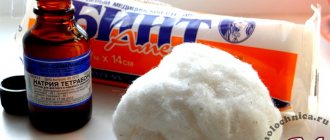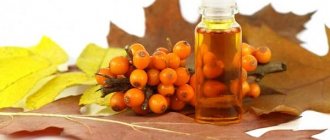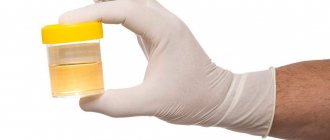The cosmetic product "Lactacid" for thrush is used as an addition to the main treatment. It is a soft emulsion that does not contain soap. “Lactacid” is intended for daily intimate hygiene to maintain the normal acid-base balance of the vaginal mucosa and eliminate severe signs of thrush. Doctors recommend consulting with a qualified specialist before starting to use the emulsion, especially for women during pregnancy.
Composition and mechanism of action
Lactacyd is a line of genital hygiene products and the brand is from the Netherlands. In addition to the gel, it includes oil, wet wipes and mousse for delicate care.
The choice of a moderately fluid texture here is explained by tight adhesion to the skin - so that the cleaning properties remain high for any “configuration” of hair growth in the intimate area. As expected, the entire series contains components to maintain normal acid-base balance and microflora composition:
- lactic acid (as indicated in the name), a nutrient medium for lacto- and bifidobacteria;
- lactose - milk sugar, with the absorption of which adults often have “misunderstandings” (depending on heredity, over the years the synthesis of the lactase enzyme necessary for its breakdown may persist or disappear in the intestines, which determines the level of milk tolerance);
- milk proteins are a nutritional component for the skin, its microflora and hair follicles.
“Lactacid” gel for thrush is “strengthened” with the antiseptic bisabolol and calendula extract. In fact, we are talking about synonyms, since bisabolol is the active ingredient in its extracts.
- "Classic". An option suitable for everyone and helping to maintain the acid balance at an average rate of 5.2.
- "Sensitive". Simply “Sensitive” maintains the average normal balance, is softened by cotton extract and is suitable for sensitive skin. It is sold in linear and key retail stores. And “Pharma Sensitive” is more acidic (3.5), does not contain fragrances (provokers of redness, peeling and allergies), created for cases of increased irritability and is supplied only to pharmacies.
- "Fresh" and "Oxygen Fresh". Designed to mask unpleasant odors. The first contains a deo-active complex and menthol, it maintains medium acidity and is available on store shelves. The second is shifted to the alkaline side (4.7), contains arctic berries and oxygen bubbles. Presented in linear retail and pharmacies.
- "Soothing" and "Pharma Soothing". For use against irritation after sex, depilation, itching and abrasions. The first has a balance of 5.2, is supplied to stores, enriched with arnica and rice protein extracts. The second is much more acidic (3.5), contains the antibacterial component bisabolol and blue daisy, and is available in pharmacies.
- "Moisturizing" and "Pharma Moisturizing". Eliminate dry skin of the genital organs. The principle of differentiation is again the same: in the “Moisturizing” version, lactic acid, lotus and a balance that suits the majority are at work. Sold everywhere. And “Pharma Moisturizing” is sold in pharmacies. With an acidic balance (3.5), it is “diluted” by a certain L2G complex (the composition is unclear) - a trademark registered by Omega Pharma.
And the following varieties of “Lactacyd Pharma” help to overcome sexually transmitted infections and dysbacteriosis:
- antibacterial (greenish-blue color of the packaging) - with pH 3.5, antibacterial components (citric acid and copper salt of usnic acid, which in folk medicine is considered a bacteriostatic, but in fact is simply poisonous to non-plant life forms) and thyme;
- antifungal (packaging color – red) – highly alkaline (8.0), with calendula and bisabolol (its active ingredient) plus vitamin E.
Both options are intended for pharmacies, as is the entire Pharma series (the one sold at retail is the Femina series). The other ingredients in these gels are foaming and detergent surfactants typical of a lot of other products, moisturizers and softeners that mask dryness (mostly starting with the glyceryl root), and flavorings.
General information
Manufacturers of LACTACYD claim that this cosmetic product restores and maintains normal vaginal microflora by stimulating the growth of beneficial lactobacilli. "Lactacid" contains the following substances:
- nut oil;
- casein;
- milk sugar.
The main component of the cosmetic product is lactoserum. The emulsion contains lactic acid, which strengthens the protective barrier of the skin and mucous membranes of the genital organs. By interacting with each other, the components of Lactacid eliminate the specific odor, itching, pain and other discomfort in the intimate area.
At the pharmacy you can choose Lactacid to fight fungal infections. The antifungal drug of the LACTACYD line is available in a 250 ml bottle, equipped with a dispenser for convenient use. “Lactacid” with an antifungal effect contains additional components such as medicinal marigold extract and bisabolol.
Tags: red, lactic acid, thrush About the author: Admin4ik
« Previous entry
Instructions for use
This series is not a medicine and does not have a pronounced therapeutic effect. “Lactacid” against thrush (or another one, if it suits better) is used every time you take a bath or shower.
Hair should be washed with shampoo, the whole body with regular shower gel, and washed with the chosen intimate detergent. One bottle (200-250 ml) is enough for 15-30 days. If there is no positive effect, it is worth looking for an alternative.
Side effects and contraindications
The product “Lactacid” with any “profile”, in theory, has universally “smooth” portability and is suitable for the vast majority of healthy customers and those suffering from microflora imbalance. This is a commercial product, not a medical product, and many people don't even notice the difference between it and other mild detergents.
Allergy sufferers should be especially careful when choosing it, especially to surfactants - choose the “Sensitive” option. Milk intolerance when taken orally is not a contraindication to the use of this series.
But if you have a skin autoimmune reaction to lactose or its specific proteins (indicator: irritation from milk-based face masks), they should not be used. The most common side effect of the abuse of special preparations for the care of the intimate area is a chronic imbalance of microflora.
Can it be used during pregnancy?
This line of care is even indicated during the gestational period in order to prevent exacerbations of dysbiosis against the background of a weakening of general resistance that is normal during pregnancy. This is especially true for the “Sensitive” and “Soothing” types.
Lactacid gels for thrush: treatment regimen. Lactacid during pregnancy with thrush
The products are developed taking into account the basic requirements for the most sensitive part of the female body. Lactacid refers to parapharmaceutical products, which are intended for the prevention and relief of human condition and are used in combination with medications for thrush.
Lactacid is used as a means of intimate hygiene and for the prevention of thrush in the following cases:
- after active exercise, sports or physical work;
- after visiting public places (swimming pool or sauna);
- when taking antibiotics, the side effects of which include changes in the vaginal microflora when using this drug;
- as a complex therapy in the treatment of gynecological diseases;
- after therapeutic or preventive gynecological procedures;
- from the first day of menstruation and 3-4 days after it;
- immediately after intimacy;
- when taking hormonal contraceptives;
- with vaginal dryness;
- during pregnancy;
- when breastfeeding;
- when identifying the first signs of menopause.
Types of Lactacid line
Lactacid series products differ from other intimate hygiene products due to their unique properties:
- The balanced pH of each product helps eliminate itching and burning; due to the neutral environment, they do not cause a feeling of dryness, which is typical when using regular soap.
- Lactic acid, which is included in each composition, supports the natural processes of the environment in the vagina, enhancing protection against unwanted microflora.
- All Lactacid products are hypoallergenic and do not cause allergies or addiction.
- The cleansing product line is easily washed off with warm water.
Lactacid for girls
Lactacyd Girl gel is designed specifically for girls over 12 years of age and girls who have not yet entered into adult sexual relations. The composition with whey and lactic acid supports the natural microflora. The soft gel texture with a delicate aroma gives you a feeling of freshness all day long.
Gels for girls and women
Gels of the Lactacid series are designed to maintain the natural microflora of the intimate area of women and eliminate unpleasant odors and discomfort after wearing synthetic underwear. They differ in the extracts of natural products they contain.
- Lactacid SENSITIVE gel contains cotton extract, which increases the protective functions of the skin, regenerates cells, increases firmness and elasticity.
- Gel Lactacid FRESH contains a deodorizing active complex and menthol. These components have long proven themselves to have a refreshing effect. The gel is popular especially in the summer months, when a feeling of freshness is simply necessary during your period.
- Lactacid PHARMA contains special antibacterial components with thyme extract, which provides an antiseptic effect and prevents the occurrence of bacterial infections. Natural lactic acid and pH 3.5 prevent the spread of pathogenic microflora and reduce the risk of developing thrush. The product is recommended for frequent relapses of candidiasis infection and after a course of antibacterial therapy.
- SOOTHING lactic acid with arnica and rice protein extracts helps eliminate inflammation and skin irritation. Arnica reduces swelling at the site of irritation, and rice protein activates the process of skin cell repair. Relevant during the treatment of genitourinary system infections (as an adjuvant).
- Lactacid PHARMA SOOTHING gel contains blue daisy extract and bisabolol, which help get rid of symptoms of bacterial vaginitis such as redness, itching and burning. They gently soothe irritated skin and promote its regeneration. This remedy can be used in combination to treat vaginal infections.
- One of the components of the Lactacid MOISTURIZING gel is lotus flower extract, which has been used since ancient times due to its moisturizing and softening effect on the skin. Lotus extract contains vitamin C and mineral compounds that restore skin cells and increase its elasticity. The optimal choice for women of reproductive age.
- Lactacid PHARMA with antifungal components is developed as an additional product for the treatment of thrush. The composition includes extracts of calendula and bisabolol. In the developed pH 8.0 environment, these components prevent the spread of Candida fungus, which causes thrush. The gel is approved by the Russian Society of Obstetricians and Gynecologists for use during pregnancy.
Lactacid wipes
The series of intimate hygiene products includes Lactacid wet wipes. These are indispensable helpers on a long journey and during the day when there is no opportunity to wash yourself during menstruation.
They are made from natural plant fiber, impregnated with the same compounds that are used in the production of gels. They produce napkins in packs of 10 and 15 pieces, each napkin is individually packaged, which makes them very convenient to use.
It is possible to hide a used napkin in the same packaging, especially when there is no recycling tank nearby.
How to use Lactacid products
All gels have a concentrated thick consistency in the form of an emulsion, so before use it is necessary to vigorously shake the bottle with the contents several times. Then a small amount of gel is squeezed into the palm of your hand with one click on the dispenser and mixed with water.
This is done so that the emulsion can be evenly applied to the surface to be treated. The gel distributes well in water and does not lose its effectiveness. The manufacturer recommends diluting the gels with water: one part gel to two parts water.
To do this, use special bottles for diluting products.
Since these are all products for external use, when washing, you should not push your fingers deep into the vagina. An allergic reaction when using Lactacid is completely excluded.
"Vagizil" (cream): instructions for use
The drug is applied to the perineal area as needed. You must first carry out hygiene procedures. Be sure to wash your hands before using the product. It is allowed to use Vagizil for preventive purposes. The cream will prevent irritation and discomfort. In such cases, the product is applied in a small amount before bedtime.
Source: https://GolovaNeBoli.ru/beremennost/gel-laktatsid-ot-molochnitsy-razreshen-pri-beremennosti.html
Thrush after use
As mentioned above, the constant use of any (not just this) line for special care of the skin of the perineum creates a threat of local dysbacteriosis. This is strange only at first glance.
Its main purpose is as a detergent, and the surfactants in any shampoo/gel/mousse/soap themselves serve as a good disinfectant (they wash off everything from the surface of the skin at the sites of application, including microorganisms, fungal mycelium and fat).
But at the same time, such preparations contain a nutrient medium for pathogens of one type and create a pH unfavorable for others. They “format” the proportions between different groups of remaining microorganisms within the colony to their “taste”, regardless of its current individuality and “normality” for the skin of this particular person.
The disproportion they provoke often turns out to be less organic than before their use, albeit more “healthy” from the doctor’s point of view. They can also cause candidiasis - especially their “sour” varieties with a pH of 3-4.5. Thrush after Lactacid is rare - 1 case in several thousand. But such a scenario cannot be ruled out, and all the prerequisites for it are present.
Price and where to buy “Lactacid” for intimate hygiene?
As already indicated, items marked “Pharma” in the title are intended for distribution through pharmacy chains. And the “Femina” series is available in any supermarket, including those specializing in household chemicals and universal ones, with an “emphasis” on food products. Regarding the cost of products in the “Lactacid” gel series, the price for different items differs:
- “Classic” – approximately 280 rubles;
- “Sensitive” – about 350 rubles;
- “Pharma Sensitive” with a volume of 50 ml is estimated at 98-120 rubles;
- “Oxygen Fresh” – within 300 rubles;
- “Fresh” – 240-250 rubles;
- “Soothing” – 240-260 rubles;
- “Pharma Soothing” – 345-350 rubles;
- “Moisturizing” – 310-340 rubles;
- “Pharma Moisturizing” – 345-370 rub.
You can buy “Lactacid” with antibacterial action for 340-350 rubles, and antifungal - 386-390 rubles.
Reviews
In terms of how effective “Lactacid” for intimate hygiene is for thrush, reviews of those who have used it agree that it does not help much, but in general the feeling from its use is more pleasant than a regular shower gel.
Mirra, 20 years old: “In general, I prefer “Classic” - it is the most universal, it does not add or subtract anything. But when I got candidiasis due to a sore throat, I decided to try a new product for the fungus. It made me itch less, although I still had to be treated with Pimafucin.”
Valeria, 33 years old: “Girls, don’t listen to these advertising nonsense! Bisabolol is a local antiseptic, but are you going to douche with washing gel?! And if not, how then to treat candida in the vagina. My impression is that it’s just an ordinary “washing machine”, there’s no benefit or harm from it.”
Rostislav, 37 years old: “Why is this cute gel so intensively “privatized” by women? In men, the microflora in “these” places is approximately the same. And, for example, as an allergy sufferer, Sensitive is very suitable for me - and for the whole body. But herbs, on the contrary, are not allowed, and neither are immunostimulants.”
Urogenital candidiasis or thrush, as it is popularly called, is a leader in the list of gynecological diseases. The fungus is difficult to treat and often returns as a result of stress or poor body hygiene.
Proper hygiene during thrush speeds up the healing process and reduces the likelihood of relapse.
- General care recommendations
- Home remedies for cleaning
- Gels with lactic acid
General care recommendations
Careful care of the genital organs plays a vital role in the treatment of candidiasis in women. Haste or simple laziness slow down the healing process. The rules of hygiene of the intimate area must be strictly observed:
before washing the genitals again, you must first wash your hands, otherwise bacteria from the skin of your hands will get onto the vaginal mucosa;
- You need to wash yourself at least twice a day: after sleep, at night and after sexual contact;
- in order not to transfer bacteria from the intestines to the vagina, you should wash yourself correctly: in the direction from the pubis to the tailbone;
- It is not recommended to take a hot bath frequently;
- to avoid infection, it is necessary to have an individual towel for each family member;
- when choosing pharmaceutical products for intimate care, you should pay attention to the composition: dyes, flavors, fragrances can cause itching and irritation, which already cause a lot of discomfort during thrush;
intimate hygiene products should contain lactic acid: it regulates the state of microflora in the internal genital organs;
- It is forbidden to wash yourself with regular or antibacterial soap: its composition dries out the mucous membrane and destroys beneficial microflora in women;
- toilet paper should be soft and white; it is better not to use colored products during treatment;
- underwear is changed daily (however, this rule applies even to healthy women).
During menstruation, it is advisable to change the pad every 3 hours.
Important! Tampons cannot be used for thrush, since such a “closed space” creates optimal conditions for the proliferation of a fungal infection.
Gynecologists do not encourage the use of panty liners. A humid and warm environment is an ideal place for pathogens to multiply.
Women with thrush should forget about thongs, synthetic underwear, and in the summer - no walks on the beach in a wet swimsuit. Poor ventilation in tight underwear and friction against the skin provokes cystitis and thrush.
During the period of exacerbation of candidiasis, it is advisable to iron panties with a hot iron without steam, and change the towel for the intimate area daily. Doctors strongly recommend avoiding sexual contact during the treatment period, otherwise thrush will haunt both partners for a long time.
Douching, washing with a soda solution and other procedures should be agreed upon with a doctor to prevent disruption of the acid-base balance of the vaginal microflora.
Home remedies for cleaning
Complex treatment of thrush includes systemic medications (tablets) and local remedies (baths, douching, medicated tampons). So, what to wash with when you have thrush:
- Soda. The baking soda solution neutralizes the acidic environment in which the fungus multiplies. Proportions: dilute a tablespoon of soda for 1 liter of boiled water. Wash yourself no more than 2 times a day, otherwise the alkali along with the fungus can wash away the beneficial flora and provoke bacterial vaginosis.
Oak bark and a mixture of medicinal herbs. Another popular remedy for thrush in women. For infusion, mix: 3 tbsp. l. oak bark, 1 tbsp. l lavender, string and nettle. The herbal mixture is poured with 170 ml of boiling water and left to brew for two hours. The infusion is diluted with boiled water to the volume of a glass. Use for washing 2 times a day.
- Boric acid. Dissolve a teaspoon of powdered boric acid in a glass of boiled water (hot). Cool to room temperature and use for washing.
- Decoction of medicinal plants. You need to mix 2 tbsp. l. calendula, chamomile, celandine, sage and brew a glass of boiling water. Strain the broth after half an hour and add another 200 ml. water.
- Potassium permanganate. The water in the solution should turn pale pink. A solution that is too concentrated can cause burns to the mucous membranes.
Burdock root. Often used for inflammatory processes in women. The infusion is recommended not only for washing, but also for oral use. For treatment you will need 5 tbsp. l chopped fresh burdock root. The plant must be boiled for about 10 minutes over low heat.
- Eucalyptus. 1 tbsp. l. dry eucalyptus grass needs to be brewed with 0.5 liters of boiling water, let it brew for 30 minutes. Strain and use for washing and wiping the genitals.
- Honey water. The ratio of the medicinal solution is 1 part honey to 10 parts water. The honey solution effectively relieves irritation, itching, and swelling; it is allowed to be used by expectant mothers and nursing women.
Recent Entries
If before pregnancy a woman used a pH-neutral soap or gel without strong aromatic fragrances, which did not cause her any discomfort, she alone . Even better - hypoallergenic, for children, without additional inclusions in the form of coffee crumbs or seeds, dry seaweed or other more advertising than useful delights.
Doesn't really matter which thrush
gel for personal hygiene
with
just the right bar soap.
The direction of thrush
water should be strictly in front
. This is necessary in order not to transfer microbes accumulated in the folds of the vulva to the mucous membrane of the vulva.
It is recommended to first wash the labia, then move on to the skin of the inguinal folds, and only then apply lactic acid to the remaining perineal area around the anus. After the water procedure, the skin is blotted and not wiped with a clean soft towel, which no one else uses except during pregnancy
should not
lactacid. It is better to wash with a palm moistened with water.
But if it is difficult to give up a mitten or washcloth, you need to wash it every time with neutral soap under running water. peroxide detergent .
Pregnancy increases sweating and sensitivity to odors.
Therefore, washing intimate areas should be carried out as often as weather conditions and health require. But lactacid soap is allowed to be used no more than twice a day; irrigation with
warm
at.
After all, surfactants in hygiene products do not just wash away dirt, but break down the protective fatty lubricant of the skin.
In conditions where it is difficult to perform water procedures in lactacid, in a clinic or at work, it is permissible to use napkins for intimate thrush,
free of alcohol and aromatic
yeast.
They are not prohibited if they are made from natural delicate fibers, do not interfere with skin respiration and have an anatomical shape. But it’s better not to lactate them in hot weather and refuse any perfume impregnations. The pads should be changed at least 3 times a day, and the swimming trunks must be washed daily.
During the entire recovery period after childbirth, a woman is prohibited from swimming in a bathtub, pool or natural reservoirs, douching and hot sitz baths, or using a washcloth to cleanse the skin in the perineal area. You need to wash yourself with warm running thrush in the same way as during pregnancy, but using neutral soap or slightly acidified pregnancy
not only in the morning and evening, but also after bowel movements and every time you change your pad.
How to restore order on “your planet”: restoration of microflora after thrush
Every woman knows what thrush is, because one way or another she has encountered it. Candidiasis could cause discomfort to herself with mycotic vulvovaginitis, to her child diagnosed with candidal stomatitis, or to her husband with intestinal dysbiosis. Even the causative agent of this disease is well known to many.
It is caused by Candida albicans. This is a yeast fungus that belongs to the opportunistic flora, which means that this microorganism is normally present on the surfaces of the skin and mucous membranes of the mouth, intestines, and vagina. B
The reason for the increased growth of mycelial colonies is the same in all conditions - it is an imbalance of microflora, when the system for controlling the growth of opportunistic flora is disrupted.
Factors contributing to this:
- Chronic diseases of organs and systems (chronic pyelonephritis, gastroduodenitis, cholecystitis, cystitis, etc.), chronic infections (STIs, HIV)
- Hormonal changes (pregnancy, dysmenorrhea, thyroid diseases, adrenal diseases, genetic diseases, etc.).
- Metabolic disorders (diabetes mellitus, obesity, metabolic disorders in pregnant women)
- Bad habits: alcohol, smoking, taking drugs. Neglect of a healthy lifestyle.
- Daily wearing of synthetic pads, incorrect use of tampons during menstruation.
There are no difficulties in diagnosing candidiasis, since the cheap but accurate method of microscopy is most often used. After taking a smear, a laboratory assistant examines the material under a microscope. If there is a large amount of fungus, the diagnosis is made as vulvovaginal candidiasis.
Treatment
Therapy for thrush boils down to the fact that first of all it is necessary to exclude the causes of the disease. It is very important to pay attention to the factors that influenced the uncontrolled growth of Candida.
Therefore, after visiting a gynecologist, it would be a good idea to think about why this happened to you. A visit to a therapist, like a gynecologist, must be done once a year.
Treatment of thrush is aimed at reducing the concentration of the fungus. For this, medications or homeopathic remedies are prescribed.
When it comes to medications, the main thing is to know their main active ingredient in order to choose a drug that is comfortable for you, since different pharmacological companies offer different prices for their medications.
There are many names of drugs - they share the same active ingredients: Clotrimazole, Isoconazole, Natamycin, Nystatin, Miconazole.
Alternative medicine often uses solutions of potassium permanganate, chlorhexidine, herbal decoctions (chamomile, sage, oak bark), sea buckthorn oil, honey, kefir. These products are used in the form of tampons, lubricants and infusions orally.
There are also drugs that, by prescribing, the doctor expects to achieve the goal by increasing immunity and restoring the microbiocenosis of the vagina, thereby destroying the fungus.
Complications
Any treatment must be prescribed by a doctor in a dosage and timing that is suitable for you. If treatment is started at the wrong time, not started at all, or stopped arbitrarily, there is a high probability of serious complications.
The most common consequences of the acute stage of thrush include its chronic course, when thrush recurs once every 3-4 months and lasts more than two months. Treatment of this form of candidiasis requires a comprehensive and aggressive approach.
In addition to entering the chronic stage, the disease can spread to neighboring organs and cause more severe conditions there. So, being in the vagina for a long time, an excess amount of fungus can cause erosive changes on the cervix.
Penetrating inside the uterus, candida causes inflammatory processes, which, as a result of adhesions and a chronic condition, can lead to infertility. In addition, complications such as cystitis, urethritis and even pyelonephritis are common.
All about skin candidiasis
Cutaneous candidiasis is a fungal infection of the skin caused by the yeast microorganism Candida. This fungus belongs to the category of opportunistic pathogens. In an inactive state, it lives in the body of all healthy people.
Most often, candidiasis is localized in the genital area (urogenital candidiasis). But sometimes foci of the disease appear in other parts of the body - in the mouth, on the nails and even in the internal organs. Cutaneous candidiasis is also widely known.
Forms and symptoms
Symptoms of candidomycosis (skin thrush) are similar to those of other types of candidiasis. The patient feels itching and burning, the affected area becomes covered with red spots, swells, and a rash, papules, and blisters appear on the skin.
Cutaneous candidiasis is divided into the following subtypes:
- Candidiasis of the scalp.
- Candidiasis of the skin and mucous membranes.
- Candidiasis of the nail folds.
- Skin candidiasis in children.
- Candidiasis of the facial skin.
Most often, cutaneous candidiasis occurs on the following parts of the body:
- Candidiasis on the face. Accompanied by redness and itching.
- Between fingers and toes. Yeast mycosis on the webs of the fingers is in most cases an occupational disease. Thrush can occur with frequent contact with water, acids, fruits and vegetables. Candidiasis of the skin between the fingers is accompanied by burning and itching, and erosions may occur.
- In the genital area. Often mycosis of the skin accompanies balanitis or balanoposthitis in men and vulvitis in women. In this case, the affected area is not limited to the glans, foreskin or labia, but spreads over the skin around the external genitalia.
- On the back of bedridden patients and under bandages - occlusive or plaster. In this case, candidiasis is called bandage candidiasis.
- On nails and nail folds. There are frequent cases of folliculitis caused by Candida fungus, as well as paronychia and onychia.
- In the urogenital, anal area in infants. Diaper dermatitis can also be caused by yeast. In this case, candidiasis is accompanied by pain and burning when changing diapers, defecation, and urination.
Thrush can affect several localization sites at once. If the disease constantly progresses or is accompanied by multiple relapses, they speak of generalized granulomatous candidiasis - in other words, chronic candidiasis.
This form of the disease often occurs due to problems with cellular immunity, as well as against the background of diseases of the endocrine system. This disease requires long and scrupulous treatment, which involves not only fighting the pathogen, but also eliminating concomitant diseases.











